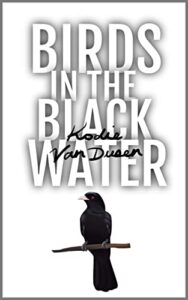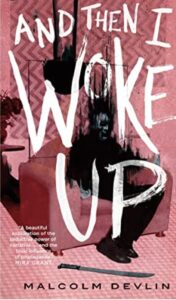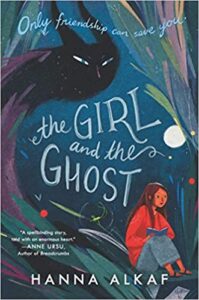Birds in the Black Water by Kodie Van Dusen
Big Cheese Books, 2022
ISBN: 978-1-7782271-0-3
Available: Paperback, Kindle edition ( Amazon.com )
Note: contains some spoilers.
Birds in the Black Water by Kodie Van Dusen is a supernatural and psychological thriller. Neviah, a clinical psychologist, and her younger brother Jaak, are gifted with the ability to inhabit both the real world and the Other Side. The latter is a dangerous, often malevolent, dark version of our world. Neviah and Jaak exist in the interface between the two worlds. Their nightmares, or a troubled person’s touch, can propel them into the Other Side where disturbing memories from their past or the other person’s past emerge. The touch often wounds them. Staying in the Other Side too long can kill them. They aren’t safe even in the real world; koels, resembling giant, black ravens or cuckoos with long tendrils for wings, appear around them, especially when danger is close.
Neviah’s and Jaak’s gift alienates them from others. Neviah has no close friends and is estranged from her aloof father and deluded mother. Her mother, who was pregnant with Jaak, crashed a truck and horse trailer. Traumatized by the accident, she has become a religious zealot, who dotes on Jaak and is cold to her strange daughter.
When Jaak succumbs to the Other Side and kills himself. Neviah thinks she could have prevented his death. She decides to become a psychologist and help troubled families. She shares her secrets with her boyfriend Ezra after Jaak’s death. They marry and buy a large farm where Neviah houses and counsels parents and their children. But Ezra is worried when Neviah uses a client’s touch to uncover memories from the Other Side and he sees Neviah’s injuries.
On a wintry night, a half-frozen, six-year old boy knocks on their cabin door. Gabriel is searching for his mother Martha. Ten years-ago during her psychology apprenticeship, Neviah failed to help a troubled, teenaged Martha escape from her drug-addicted mother and abusive father. Guilt makes Neviah search for Martha, but longing for a child of her own complicates her motives. The threads of the complicated plot come together. Why did Martha abandon her son? Will Neviah’s marriage survive? Will Neviah’s gift and guilt about Jaak’s death destroy her career and even kill her?
The author, Kodie Van Dusen uses Neviah’s voice to narrate the story. The writing style is straightforward. Van Dusen alternates events in the past and present, but develops the plot clearly. Her description of the Other Side is interesting. Her portrayal of Neviah’s emotions, e.g. her grief and guilt about Jaak’s death is moving.
Van Dusen is a clinical psychologist. Her description of the conflict between Neviah’s personal interests and her professional obligations is particularly effective. Her novel is appropriate for and will be enjoyed by teens and adults.
Highly recommended
Contains: suicide, mild gore
Reviewed by Robert D. Yee







Follow Us!